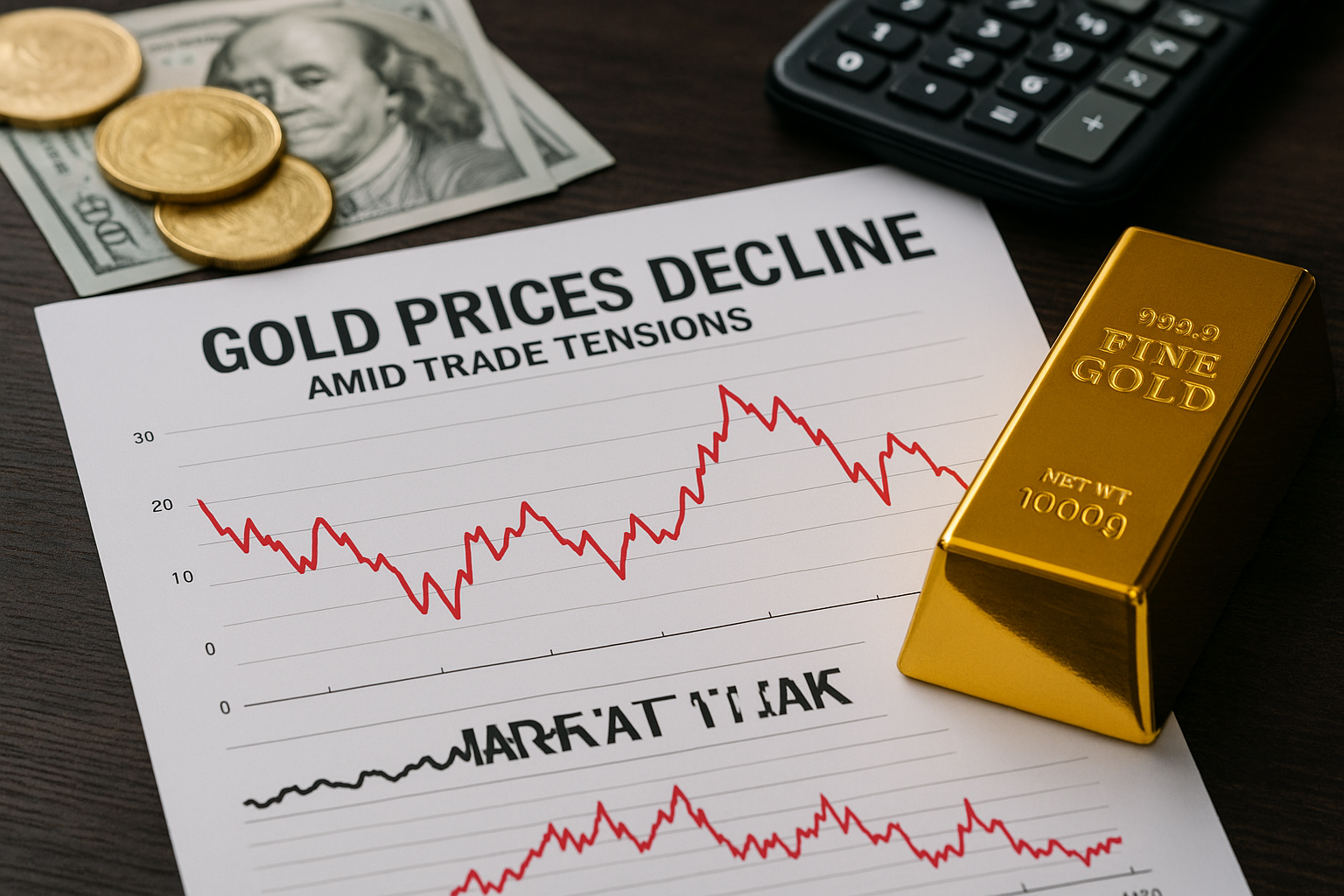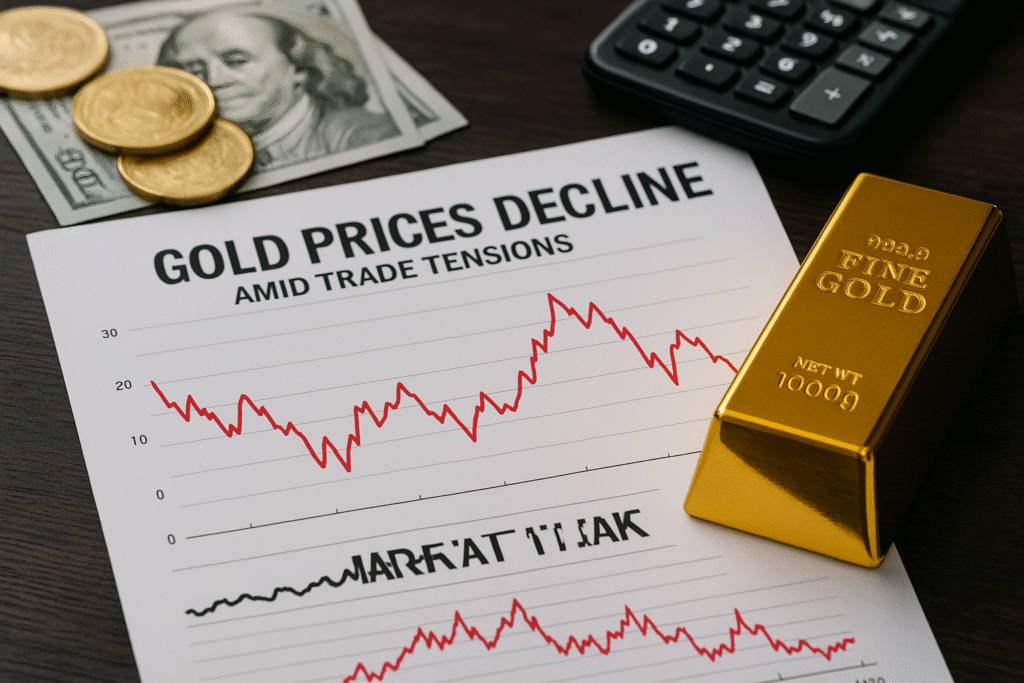
Daftar isi: [Hide]

In June 2025, global gold prices experienced a sharp decline due to renewed trade tensions between the world’s largest economies. Spot gold dropped 0.7% to $3,356.75 per ounce, while U.S. gold futures fell 0.5% to $3,381.30, according to Reuters.
This drop followed a brief rally that had pushed prices to a four-week high. The immediate catalyst for the downturn was a stronger U.S. dollar and increasing uncertainty surrounding international trade agreements. U.S. President Donald Trump’s accusations that China breached existing tariff agreements added fuel to the fire, leading to investor unease across markets.
According to the OECD, these tensions have also influenced global economic forecasts. On June 3rd, the organization lowered its global GDP growth outlook to 2.9% for 2025 and 2026, citing escalating trade disputes as a primary concern.
Why Is Gold Falling Despite Market Uncertainty?
Gold is traditionally viewed as a safe-haven asset. So why the drop? A few critical factors are at play:
- Stronger U.S. Dollar: A stronger dollar makes gold more expensive for buyers holding other currencies, reducing global demand.
- Profit-Taking: After recent gains, many investors are securing profits, contributing to downward pressure on gold.
- Economic Forecasts: The OECD’s revised projections and broader market volatility are driving uncertainty, making short-term movements in gold more reactive than strategic.
What Does This Mean for Investors?
Analysts suggest that while short-term drops are concerning, long-term outlooks for gold remain stable. Gold Mutual Funds, like those offered by Quant Mutual Fund, warn of potential corrections up to 15% in the near term but emphasize gold’s role as a long-term hedge against market instability.
Also read: OECD Cuts Global Growth Forecast for 2025 Amid Trade War Escalation
Conclusion
For investors, the current dip in gold prices may present both a challenge and an opportunity. As trade tensions continue to disrupt global markets, monitoring currency movements, trade policies, and central bank decisions will be crucial.





